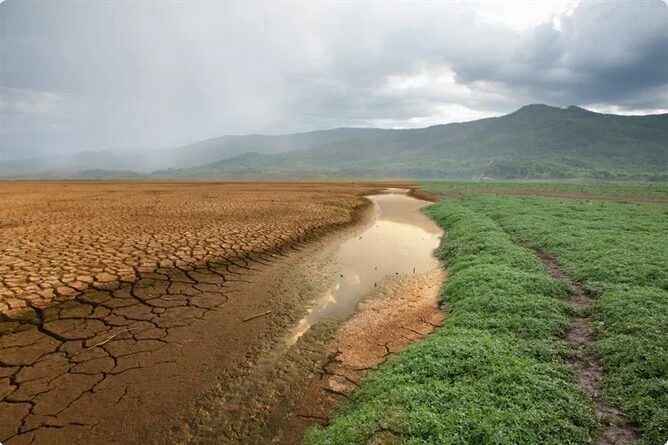Companies remain largely unprepared for heightened climate risk
Physical climate risks are on the rise. However, progress on adaptation still varies, leaving some financial and non-financial corporates vulnerable. Paul Munday, Director and Global Climate Adaptation and Resilience Specialist at S&P Global Ratings, explains
Extreme weather events and chronic physical climate risks are worsening globally. If mitigation efforts are not stepped up, by 2030, the number of climate-related disasters could be 40% higher than in 2015. The impact on economic growth will likely be heterogenous: if corporates do not adapt, up to 4.4% of the world’s GDP could be lost annually under a slow transition scenario, with developing countries disproportionately affected.
To evaluate the efficacy of companies’ adaptation strategies in the face of worsening climate hazards, S&P Global Ratings analysed 6,871 responses from S&P Global Sustainable 1’s Corporate Sustainability Assessment (CSA), as well as the adaptation and resilience plans of 130 companies. Together, the findings provide an in-depth view of companies’ preparedness to adapt to and cope with the physical impacts of climate change.
Climate disasters are intensifying, but preparedness remains low
The growing frequency and severity of physical climate risks pose a threat to corporates globally. The period 2011-2020 was the warmest on record, impacting the majority of Europe, Southern Africa and parts of North America and Asia Pacific. Notably, in the US, the number of climate disasters costing a billion dollars or more increased to 13.1 events per year in 2010-2019, up from just 3.3 per year in 1980-1989. By 2030, droughts, extreme heat, flooding and water stress could become the main climate hazards for about 50% of companies, absent adaptation.
Despite the increasing intensity of hazards, of the 6,871 companies analysed from the CSA, just one in five say they have an adaptation plan in place. This is partly due to uncertainty, as well as difficulties in quantifying the benefits of measures to be implemented in forecasting returns. Indeed, physical climate risks may not be comprehensively understood, too distant, or misaligned with companies’ business cycles.
Some sectors fall below the cross-sector average (21%), including healthcare, communication services, information technology and consumer discretionary sectors. This may reflect the limited impact of past climate events on these segments, but could also indicate a lack of awareness of – or uncertainty about – how physical climate risks could impact their operations and value chains. Meanwhile, for financial services companies in the sample, the proportion stood at less than a quarter, with physical risks typically emerging by financed exposure to corporates and individuals experiencing climate shocks.
At the other end of the spectrum, companies in the utilities and energy sectors are the most prepared when it comes to adaptation, with 40% and 30% of businesses having put plans in place respectively. The fixed location and long lives of assets in these sectors mean companies are more directly exposed to climate hazards such as storms and wildfires, which may be behind this trend. Meanwhile, historical instances of political and regulatory scrutiny following climate-related disasters are likely to weigh more heavily on businesses in these sectors, and lead to more thorough adaptation planning.
Exposure varies by region
Regional disparities are also apparent among companies making progress on adaptation. In Europe, for instance, more stringent environmental regulations and climate risk disclosure requirements appear to drive an increased awareness of potential financial impacts from climate hazards. According to the CSA, 83% of companies with adaptation plans in the region reported climate risk could be financially material. Similarly, of those companies without adaptation plans, a higher share in Europe than in other regions also reported that climate risks could have a financial impact on their operations.
Conversely, in emerging markets, 81% of companies without adaptation plans do not know whether climate risks will impact their operations. This is in spite of the fact that, as absolute hazards become more extreme, these countries face greater potential vulnerability to economic losses. Indeed, under a slow transition scenario, countries in South Asia could see around 12% GDP losses annually – three times the world average – by 2050, absent adaptation.
Slower progress may make some climate risks more difficult, and more costly, to adapt to. Meanwhile, limits to adaptation imply that some areas may be unable to be protected. For example, some low-lying islands cannot be protected from sea level rise due to economic and physical limits. This may be a particular challenge for more vulnerable countries, emphasising the urgency of short-term adaptation and resilience investments.
Looking ahead, corporate entities will represent key drivers of climate action given their unique role in channeling finance – and other benefits, such as technology – to support those most vulnerable to climate risk. Without efforts to adapt, corporates globally will be increasingly exposed to worsening physical climate risk, which may leave many underprepared to face climate hazards. S&P Global Ratings’ study shows that beyond direct damages to companies’ assets, indirect risks pose a potentially greater financial risk, including from reputational damage and/or litigation. Unpreparedness of corporates in such cases could be seen as a lack of duty of care.
Source: www.esgtoday.com




